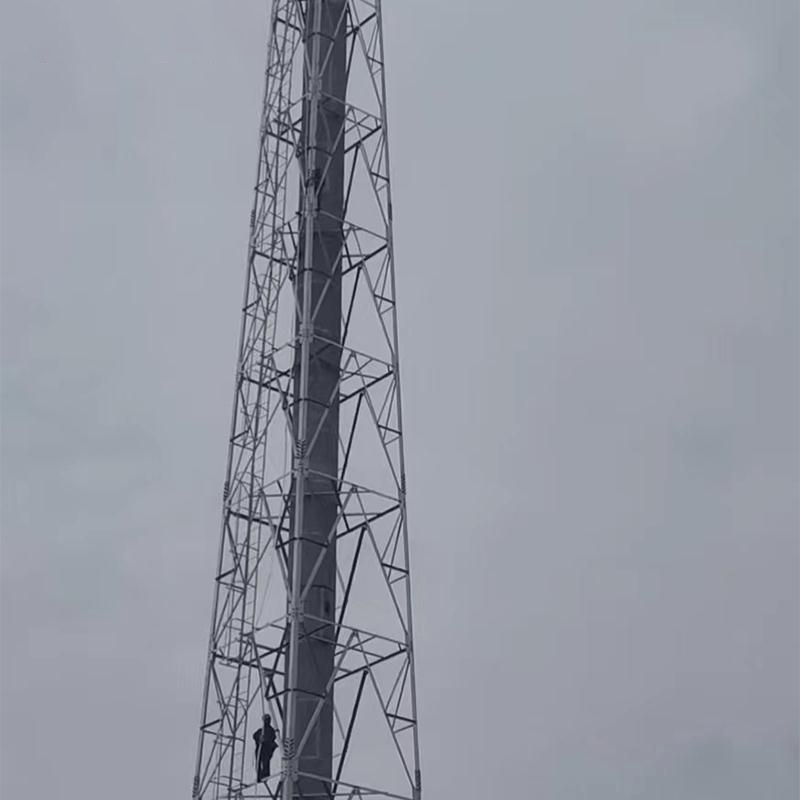Towering Variety: Exploring Different Types of Chimneys and Their Applications
2023-11-21
Introduction:
In the dynamic landscape of industrial infrastructure, the design and functionality of tower chimneys vary widely to meet the specific needs of diverse applications. Each type of chimney is crafted with precision, taking into account factors such as the nature of industrial processes, environmental considerations, and structural requirements. In this exploration, we delve into the different types of tower chimneys and the circumstances under which each type is preferred.
1. Single-Flue Chimneys:
- Description: Single-flue chimneys consist of a single vertical shaft designed to release emissions from a single source or process.
- Preferred Circumstances:
- Applications with a Single Emission Source: Single-flue chimneys are ideal when emissions originate from a single point, such as a specific industrial process or combustion unit.
- Space Limitations: In cases where space is limited, a single-flue design may be preferred due to its compact footprint.
2. Multi-Flue Chimneys:
- Description: Multi-flue chimneys feature multiple vertical shafts within a single structure, allowing for the release of emissions from different sources or processes.
- Preferred Circumstances:
- Diverse Emission Sources: Industries with multiple emission sources or processes may opt for multi-flue chimneys to consolidate emissions in a single structure.
- Efficient Space Utilization: When space allows, multi-flue chimneys provide a consolidated and efficient solution for managing emissions from various sources.
3. Concrete Chimneys:
- Description: Concrete chimneys are constructed using reinforced concrete, offering durability and structural stability.
- Preferred Circumstances:
- High Structural Stability Requirements: Concrete chimneys are preferred when structural stability is paramount, such as in environments with challenging wind conditions or seismic activity.
- Longevity and Corrosion Resistance: In corrosive industrial environments, the durability and corrosion resistance of concrete make it a suitable material choice.
4. Steel Chimneys:
- Description: Steel chimneys are constructed using steel or alloy materials, offering versatility and strength.
- Preferred Circumstances:
- Quick Construction and Installation: Steel chimneys are preferred when rapid construction and installation are crucial, making them suitable for projects with tight timelines.
- Moderate Corrosion Resistance: In environments with moderate corrosive elements, steel chimneys provide a balance between corrosion resistance and structural strength.
5. Guyed Chimneys:
- Description: Guyed chimneys feature external support structures, such as guy wires, to enhance stability.
- Preferred Circumstances:
- Height Considerations: Guyed chimneys are preferred when constructing very tall structures, as the external support helps counteract lateral forces, ensuring stability at greater heights.
- Cost-Effective Tall Structures: Compared to self-supporting chimneys, guyed chimneys can be a cost-effective solution for achieving considerable height.
6. Self-Supporting Chimneys:
- Description: Self-supporting chimneys do not rely on external support structures and stand independently.
- Preferred Circumstances:
- Limited Space for Guy Wires: In situations where space constraints or aesthetic considerations limit the use of external support structures, self-supporting chimneys are preferred.
- Optimal Structural Independence: Self-supporting chimneys are suitable when the design goal is to maintain a visually unobstructed and independent structure.
7. Industrial Stacks:
- Description: Industrial stacks are specialized chimneys designed for specific processes, such as those in chemical plants or refineries.
- Preferred Circumstances:
- Tailored Emission Control: Industrial stacks are preferred when emissions require specialized treatment or when unique process considerations dictate a custom design.
- Adherence to Stringent Emission Standards: Industries with stringent emission standards may opt for industrial stacks to meet specific regulatory requirements.
8. High-Temperature Stacks:
- Description: High-temperature stacks are designed to handle extreme temperatures generated by industrial processes.
- Preferred Circumstances:
- Extreme Process Temperatures: Industries with processes generating exceptionally high temperatures, such as in metal smelting or glass manufacturing, choose high-temperature stacks to handle the heat without compromising structural integrity.
Conclusion:
The diversity of tower chimneys reflects the adaptability of industrial infrastructure to meet the unique demands of various applications. From single-flue to multi-flue, concrete to steel, and guyed to self-supporting, each type of chimney serves a specific purpose dictated by the nature of industrial processes, environmental considerations, and structural requirements. As industries continue to evolve, the choice of chimney design remains a crucial element in achieving optimal performance, efficiency, and environmental responsibility.



